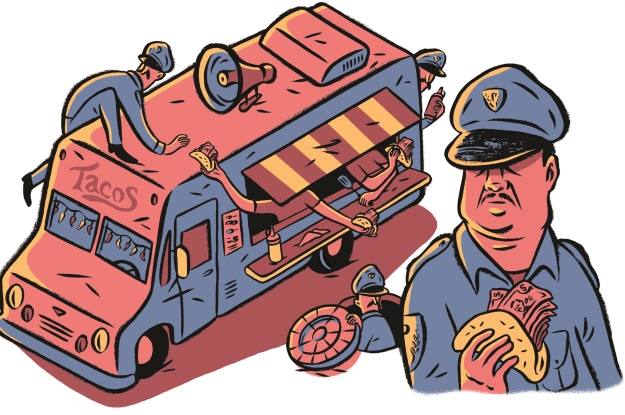While the concept of food trucks in Mexico is relatively new, street food is culturally part of our identity. In fact, the Tianguis, a word of Nahuatl origin meaning open-air market, dates back to the pre-Hispanic era in Mexico.
Nevertheless, there’s no legal framework for food trucks in Mexico City, even though there are now close to 1,000. I started building my own business here three years ago. Today I have two food trucks, but the challenges have been immense.
I wanted to share my experience, step-by-step, as a way of highlighting the challenges that entrepreneurs face and show why many people are tempted to bypass bureaucracy using personal connections or bribes. I have written this anonymously so I could give the full story of how onerous and, ultimately, destructive, red tape can be.
1. First I went to the Cuauhtémoc borough authorities to understand the process of obtaining a license to sell street food. While I was given instructions on how to complete the process, I was told it would be impossible to get a permit due to the proliferation of vendors.
2. I went to three more boroughs — Miguel Hidalgo, Azcapotzalco and Coyoacán — to try to obtain a license.
3. Unsuccessful in my attempts, I approached other food truck operators who told me they obtained permits “the hard way,” meaning they set up their businesses and attempted to get permits afterwards.
4. I decided to consult commercial lawyers to understand the repercussions of starting my business “the hard way” and discovered there was no legal classification for food trucks and thus ambiguity as to whether my business would fall under the Vía Pública, which monitors the sidewalks, or under the Ministry of Mobility, which monitors the streets.
5. I started my business “the hard way,” knowing it would be difficult to be fined.
6. One day a neighbor reported my truck and I was fined $50 pesos. While the fi ne wasn’t much, it was enough to scare me into trying to get a permit by other means.
7. I reached out to a friend who was able to connect me with a family friend working in the local government.
8. I went to the Vía Pública and, along with officials there, chose the least problematic area from my top location choices. I was given their informal authorization, but nothing to prove it. There was also an unspoken implication that a bribe would be paid, although this never materialized.
9. After a few weeks, I started getting threats from unhappy residents and informal business owners in the neighborhood. My “friends” from the government wouldn’t help, so I decided to look for other options.
10. I tried moving my food truck to different parts of the city and settled on the Colonia Roma, where I was able to obtain a license for a commercial establishment and set up a private outdoor space in a lot off the street.
– Written anonymously. Illustration by Fido Nesti.




